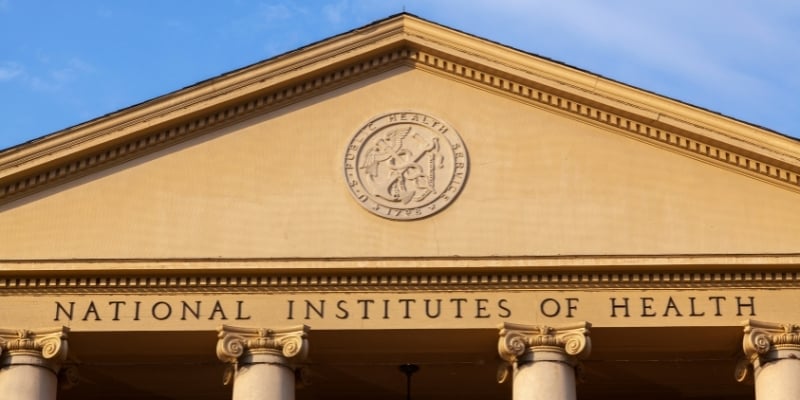A new report from the National Academies of Sciences, Engineering, and Medicine recommends two frameworks for providing respiratory protection for the nation — one for workers and one for the public — a need made clear by the COVID-19 pandemic and increasingly frequent wildfires. The report makes the case that all types of workers, including essential and gig economy workers, should be covered by Occupational Safety and Health Administration (OSHA) or equivalent respiratory protection requirements when exposed to inhalation hazards in the workplace. It also calls for a coordinated system to ensure all members of the public, including children, have access to appropriate respiratory protective devices and guidance on their effective use.
Although the need for these frameworks is long-standing, the COVID-19 pandemic highlighted health inequities and gaps in respiratory protection in workplaces with high airborne exposure risks, such as meatpacking, grocery stores, and restaurants. Members of the public have been required to wear some form of respiratory protection in settings such as schools, but they have often had to navigate issues of availability and changing guidance.
The report, Frameworks for Protecting Workers and the Public from Inhalation Hazards, was written by a committee of experts chaired by Jonathan Samet, MD, MS, dean of the Colorado School of Public Health (ColoradoSPH) and professor of epidemiology and environmental and occupational health for ColoradoSPH at the University of Colorado Anschutz Medical Campus. The committee also includes John Volckens, PhD, professor of mechanical engineering for Colorado State University and professor of environmental and occupational health for ColoradoSPH.
“All workers and the public need to be able to turn to a clear and authoritative source of information on respiratory hazards and how to protect themselves from current and future airborne threats,” said the authors in their report.
“The COVID-19 pandemic, the threats of wildfire smoke, and mold growth from flooding have made us well aware of the dangers in the air we breathe both indoors and outdoors — and the possible harms to health,” said Samet. “Many workers and the American public have been asking, ‘When do I need a mask or respirator?’ ‘Which should I use?’ and ‘How do I get it?’ Having systems in place to continuously assess inhalation hazards, identify the right respiratory protective devices, and guide workers and the public on how to use them can prevent illness and save lives.”
The report is accompanied by a commentary in the Journal of the American Medical Association in which Samet and co-authors Stephanie Holm, MD, PhD, MPH, and Sundaresan Jayaraman, PhD, discuss the nation’s unmet needs for respiratory protection.
The JAMA Viewpoint authors point out that questions from the public cannot be answered satisfactorily at the present time, particularly for groups who experience health inequities amplified by the COVID-19 pandemic.
The committee’s report recommends the U.S. Department of Labor be designated as the coordinating and responsible entity to oversee the framework for respiratory protection for workers, and that the U.S. Department of Health and Human Services (HHS) oversee the framework for the public as the coordinating entity. For the public, the report proposes interim measures to ensure immediate steps are taken to meet urgent respiratory protection needs while a more permanent structure is put into place. The two agencies overseeing the frameworks should institute and regularly report on their policies and approaches for collaboration, since workers and the public have overlapping respiratory protection needs.
Currently, no federal entity specifically approves respiratory protective devices intended for the public. The committee’s report recommends HHS designate a laboratory to oversee standards development, assessment, and approval of respiratory protective devices for the public. The laboratory should research factors that affect the design and appropriate use of devices, including facial characteristics, fit, and breathability. It should consider the unique needs of children, older adults, and people with certain health conditions.
The report also recommends that Congress revise the Occupational Health and Safety Act of 1970 to give OSHA the authority to ensure respiratory protection for workplaces that are currently outside its jurisdiction. Pending revisions to the 1970 legislation, OSHA should adopt the broadest permissible interpretation of “employees” and “employers” to expand coverage of its respiratory protection requirements. The categories of workers who could be covered under expanded definitions include gig economy workers, unpaid volunteers, domestic workers in residential settings, and some independent contractors.
In addition, the report makes recommendations to ensure a robust supply chain for respiratory protective devices, improve public health communication, and advance research on the evolving respiratory protection needs of workers and the public.
Addressing supply chain challenges
The COVID-19 pandemic exposed severe limitations in the supply chain related to respiratory protective devices. OSHA and National Institute for Occupational Safety and Health (NIOSH) should evaluate and predict the potential scope of respiratory protection needs for workers to inform stockpiling and distribution guidelines. To prevent shortages during future emergencies, OSHA should recommend appropriate quantities and types of respirators to employers.
For the public, the coordinating entity within HHS would need to work with other federal agencies to ensure an adequate supply of respiratory protective devices in the event of a large-scale emergency. The entity would also need to work with manufacturers to ensure production capability and to incentivize innovation (for example, to develop devices suitable for children of a variety of ages).
Improving communication, education, and training
Many employers may be unfamiliar with respiratory protection programs, the report says. OSHA and NIOSH should support the development of tailored guidance and training for employers and workers. OSHA should also work with labor organizations and other groups to develop tailored materials and to reach workers across different sectors.
The Centers for Disease Control and Prevention (CDC) should lead the development of guidance on the use of respiratory protection by the public for all events that affect air quality and human health. Public guidance should clearly state what type of product to use, and when and how to use it. Recognizing the population’s diversity, the committee firmly stated the need to ensure that respiratory protection is available to everyone.
Expanding research and surveillance programs
Efforts to meet the respiratory protection needs of workers and the public must be built on a strong scientific foundation. NIOSH should expand research and surveillance programs to better understand and meet the needs of all workers, including those living with disabilities or chronic conditions. It should also prioritize research on the effectiveness of different types of respiratory protection program models. Such expanded research and surveillance activities may justify additional appropriations from Congress, the report says. Research on innovative respirator design to meet the needs of workers may also inform the development of devices intended for public use.
The study — undertaken by the Committee on Respiratory Protection for the Public and Workers without Respiratory Protection Programs at their Workplaces — was sponsored by the CDC Foundation, U.S. Department of State, U.S. Environmental Protection Agency, and the National Institute for Occupational Safety and Health. The National Academies of Sciences, Engineering, and Medicine are private, nonprofit institutions that provide independent, objective analysis and advice to the nation to solve complex problems and inform public policy decisions related to science, technology, and medicine. They operate under an 1863 congressional charter to the National Academy of Sciences, signed by President Lincoln.






